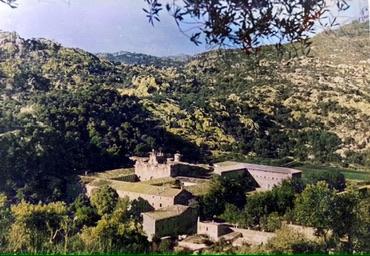Are there guided tours available at Lluc Monastery that explain its history and significance?
Similar Topics
lluc monastery tours
guided tours mallorca
serra de tramuntana
monastery history
pilgrimage destination
virgin of lluc
religious artifacts
mallorca heritage tours
Yes, guided tours are available at Lluc Monastery, providing visitors with a comprehensive understanding of its rich history and cultural significance. The monastery, nestled in the Serra de Tramuntana mountains of Mallorca, is an important spiritual site with origins dating back to the 13th century. Guided tours typically cover the architectural features of the complex, including the basilica, the cloister, and the museum, offering insights into the religious, historical, and artistic elements that have shaped the monastery over centuries. These tours also explain the monastery’s role as a pilgrimage destination, particularly focusing on the revered statue of the Virgin of Lluc, known locally as “La Moreneta.”
During the tour, knowledgeable guides share stories about the monastery’s foundation, its function as a retreat for monks, and its continuing importance to the local community and visitors alike. The explanation often extends to the surrounding natural environment, highlighting how the setting in the Tramuntana mountains enhances the spiritual atmosphere of the monastery. Visitors who participate in guided tours can expect a paced and informative experience that allows for questions and reflection. Additionally, tours sometimes include visits to the on-site museum, which houses religious artifacts, historical documents, and artwork linked to the monastery’s history.
Booking a guided tour in advance is advisable, especially during peak tourism seasons, to ensure availability and a well-organized visit. Most tours are conducted in Spanish, though English and other language options may be available depending on the season and visitor demand. For those who prefer to explore independently, informational materials and audio guides can supplement the visit, but the depth of knowledge offered by a guide provides a richer and more engaging understanding of Lluc Monastery’s place in Mallorca’s heritage. Overall, the guided tours make the visit more meaningful by connecting the site’s past to its present spiritual and cultural relevance.
During the tour, knowledgeable guides share stories about the monastery’s foundation, its function as a retreat for monks, and its continuing importance to the local community and visitors alike. The explanation often extends to the surrounding natural environment, highlighting how the setting in the Tramuntana mountains enhances the spiritual atmosphere of the monastery. Visitors who participate in guided tours can expect a paced and informative experience that allows for questions and reflection. Additionally, tours sometimes include visits to the on-site museum, which houses religious artifacts, historical documents, and artwork linked to the monastery’s history.
Booking a guided tour in advance is advisable, especially during peak tourism seasons, to ensure availability and a well-organized visit. Most tours are conducted in Spanish, though English and other language options may be available depending on the season and visitor demand. For those who prefer to explore independently, informational materials and audio guides can supplement the visit, but the depth of knowledge offered by a guide provides a richer and more engaging understanding of Lluc Monastery’s place in Mallorca’s heritage. Overall, the guided tours make the visit more meaningful by connecting the site’s past to its present spiritual and cultural relevance.
🧩 Related Questions
Related Question
What educational opportunities exist on Mallorca for visitors interested in the cultural heritage represented by 'barraques' and 'casetes d’eines'?
Related Question
How do artisanal products like cheese and wine reflect Mallorca’s culinary culture for travelers?
Related Question
Are there multilingual guides available for tours offered by Viajes Noris S.A. in Mallorca?

